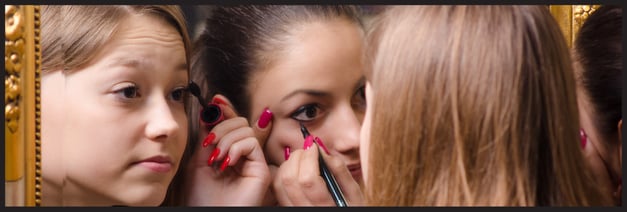
Marketers who have been concentrating on Millennials will soon be trying to understand a new generation of consumers. Generation Z, those born between 1995 and 2010, are an enigmatic bunch that will not be swayed by traditional marketing strategies. Instead of movie stars, Generation Z is influenced by YouTube vloggers who are more peer than personality. More than any generation that’s come before, they embrace diversity and inclusivity in every aspect of their lives—and that includes beauty. In a survey of teens and tweens, researchers at Mintel asked who they would like to see in an ad for beauty or personal care items, 51% said they’d like to see “someone like me.”
Shifting Demographics
This presents a bigger challenge for marketers than they may realize: what does “someone like me” really mean for the most diverse generation in American history? While diversity may have traditionally centered on race or ethnicity, the definition is expanding to include the LGBT community, different body types, and those with physical challenges. As the population has become more diverse, teens will look for more relatable and transparent communication from brands and representation from many different types of people. To appeal to teen consumers, beauty brands can offer customizable color options and palettes that are flattering to many different skin tones. In advertising, creative with themes of personal empowerment and diversity are likely to emotionally resonate with Generation Z.
Naturally Pretty
While Millennial women are seeking selfie perfection through contouring and highlighting, their little sisters are embracing a more natural look. Natural-looking hair and makeup are on trend—the Mintel survey found that almost three quarters of young women 12-14 and 69% of those 15-17 agree that they prefer the natural look. Analysts don’t believe that girls are uninterested in beauty, it’s just that they’re looking for products that reflect a “natural” perspective. A survey on frequently used beauty products among girls 12 to 17 found that nail care and nail polish, lip care, mascara, and facial cleansing rose to the top. In keeping with their natural-is-beautiful point-of-view, teens are looking for clean or organic formulas in beauty and personal care products, paving the way for more natural brands.
Learning Online, Buying In-Store
The Mintel survey confirmed what we already knew—social media is the go-to source for discovering and learning how to use beauty and personal care products. They found that 65% of young women use YouTube to learn how to create a new style or use a product and 56% of teens follow beauty/personal care brands on social media. Today’s teens go into the store already knowing what they want—62% of teens research beauty and personal care products before they make a purchase. The internet has empowered these savvy consumers and this is good news for marketers. Why? These consumers want to engage with your brand! More than half have posted selfies or videos online trying new hair styles or beauty products and 45% have posted about brands on social media. Marketers that engage with these enthusiastic consumers on social media are likely to benefit from their attention and amplification through their social networks.
Although they’re learning about products online, they’re ultimately making most of their purchases in-store— but there’s a caveat, Generation Z expects a seamless transition between digital and physical. This is challenging retailers and brands to create a more integrated and interesting omnichannel experience. The use of mobile apps to virtually try on products, in-store sampling, and other experiential marketing strategies can help brands to stand out in the retail environment.



Comments